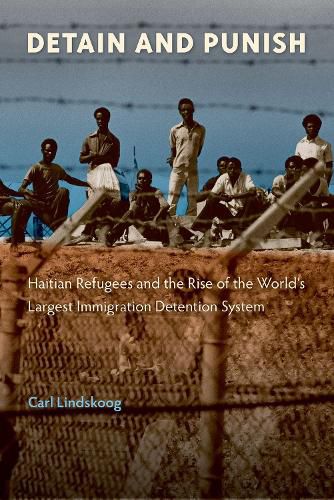Readings Newsletter
Become a Readings Member to make your shopping experience even easier.
Sign in or sign up for free!
You’re not far away from qualifying for FREE standard shipping within Australia
You’ve qualified for FREE standard shipping within Australia
The cart is loading…






This title is printed to order. This book may have been self-published. If so, we cannot guarantee the quality of the content. In the main most books will have gone through the editing process however some may not. We therefore suggest that you be aware of this before ordering this book. If in doubt check either the author or publisher’s details as we are unable to accept any returns unless they are faulty. Please contact us if you have any questions.
Immigrants make up the largest proportion of federal prisoners in the United States, incarcerated in a vast network of more than two hundred detention facilities. This book investigates when detention became a centerpiece of U.S. immigration policy. Detain and Punish reveals why the practice was reinstituted in 1981 after being halted for several decades and how the system expanded to become the world’s largest immigration detention regime.
The story begins with an influx of Haitian migrants and asylum seekers in the 1970s. The U.S. government responded with exclusionary policies and detention, setting a precedent for future waves of immigration. Carl Lindskoog details the discrimination Haitian refugees faced, and how their resistance to this treatment-in the form of legal action and activism-prompted the government to reinforce its detention program and create an even larger system of facilities. Lindskoog draws on extensive archival research, including government documents, advocacy group archives, and periodicals, to provide the first in-depth history of Haitians and immigration detention in the United States.
Lindskoog asserts that systems designed for Haitian refugees laid the groundwork for the way immigrants to America are treated today. Detain and Punish provides essential historical context for the challenges faced by today’s immigrant groups, which are some of the most critical issues of our time.
$9.00 standard shipping within Australia
FREE standard shipping within Australia for orders over $100.00
Express & International shipping calculated at checkout
This title is printed to order. This book may have been self-published. If so, we cannot guarantee the quality of the content. In the main most books will have gone through the editing process however some may not. We therefore suggest that you be aware of this before ordering this book. If in doubt check either the author or publisher’s details as we are unable to accept any returns unless they are faulty. Please contact us if you have any questions.
Immigrants make up the largest proportion of federal prisoners in the United States, incarcerated in a vast network of more than two hundred detention facilities. This book investigates when detention became a centerpiece of U.S. immigration policy. Detain and Punish reveals why the practice was reinstituted in 1981 after being halted for several decades and how the system expanded to become the world’s largest immigration detention regime.
The story begins with an influx of Haitian migrants and asylum seekers in the 1970s. The U.S. government responded with exclusionary policies and detention, setting a precedent for future waves of immigration. Carl Lindskoog details the discrimination Haitian refugees faced, and how their resistance to this treatment-in the form of legal action and activism-prompted the government to reinforce its detention program and create an even larger system of facilities. Lindskoog draws on extensive archival research, including government documents, advocacy group archives, and periodicals, to provide the first in-depth history of Haitians and immigration detention in the United States.
Lindskoog asserts that systems designed for Haitian refugees laid the groundwork for the way immigrants to America are treated today. Detain and Punish provides essential historical context for the challenges faced by today’s immigrant groups, which are some of the most critical issues of our time.